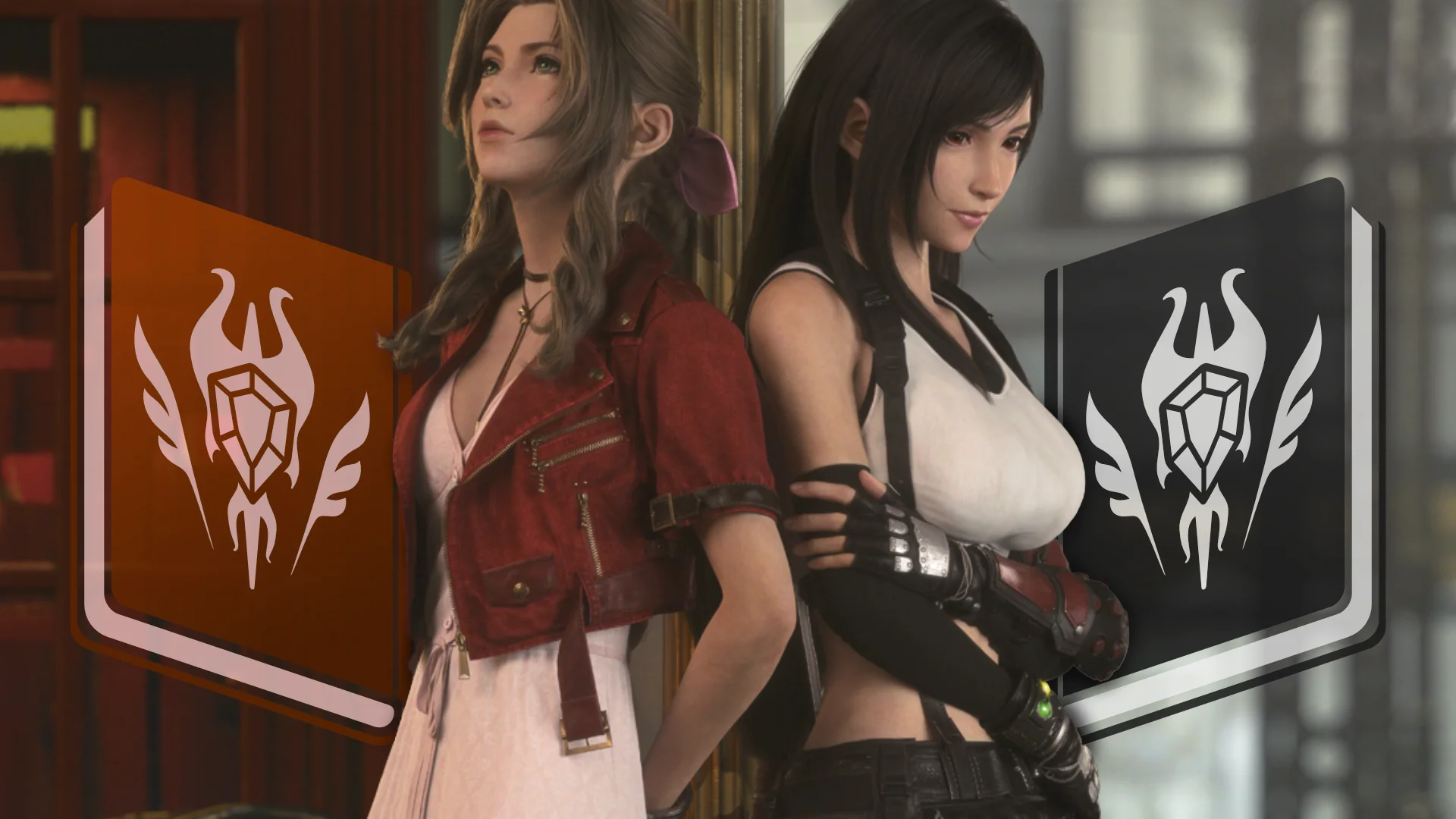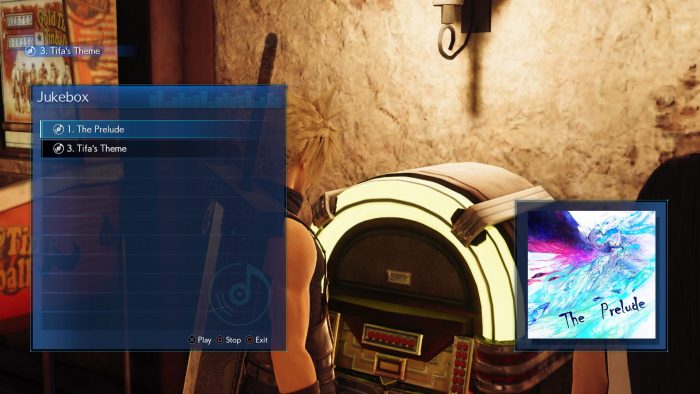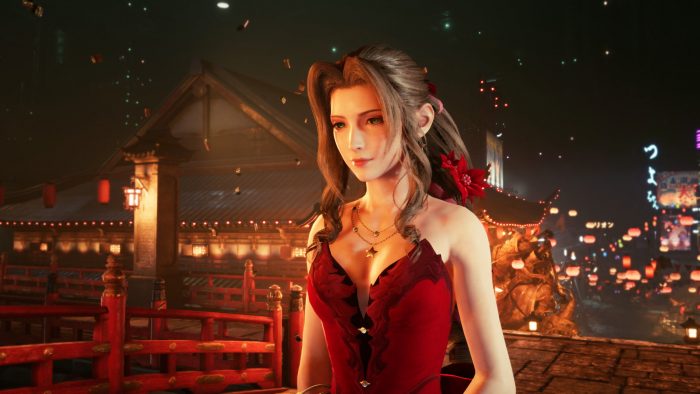For most RPGs, I’d venture to say only superfans wonder about the nitty-gritty details of each character’s past. What were they like as children? How did they become such an amazing swordsman? Why did they come to stay in this village if their birthplace is on the other side of the world? I’d reckon most people let these details go and enjoy the game as presented. Final Fantasy VII’s a different animal, though; fans have theorized and discussed these sorts of details for literal decades. In fact, the sheer volume of people frothing for more has spawned side stories like Dirge of Cerberus, Crisis Core, and even an entire movie (Advent Children). A few years ago, Kazushige Nojima, the scenario writer for the original and Remake, released a book about the main cast post-events of the original game and a Turks side story. Now, we have a novel delving deep into Tifa and Aerith’s childhood and early adulthood, titled Final Fantasy VII Remake: Traces of Two Pasts, including a little extra at the end surrounding a nameless Shinra soldier.
If you ever wondered about the rest of Tifa’s childhood outside of memories featured in the video game, Traces explores it in meaningful, though not exhaustive, detail. We learn about the boys she grew up around and their relationship to Cloud in Nibelheim. Nibelheim’s daily life and Tifa’s father enjoy some notice, as well. Also, ever wonder how Tifa became such a tenacious martial artist? We get to learn about that, too. And Midgar—did she just hop on a truck and open a bar? And what exactly happened after Sephiroth set fire to the town?
Tifa discusses these topics with her companions as they travel outside of Midgar, giving short snippets of her past while currently living events in Final Fantasy VII. For the most part, we see the world through young Tifa’s eyes and get a sense of what she values, how she perceives others around her, and what drives her. This perspective is refreshing in its own right because we don’t normally get this sort of insight with any Final Fantasy character, let alone in book form.
Fans of the series and avid gamers may find the storytelling initially unusual because, if you think about it, most of the games we play are dialogue- and action-driven. Reading prose and observing facial expressions or tone through a character’s perspective is innately different from video game storytelling, which can lean more cinematic for this reason alone. For example, if we were playing Aerith and seeing her run upstairs as Tseng walks through the front door, we concretely understand fear, as the character is visually engaging in the action when another shows up. Conversely, when young Aerith sees a stranger walk through the door, we’re immersed in her viewpoint as her anxiety is described in visceral terms, which leads to her running upstairs and hiding. Nevertheless, Traces of Two Pasts is definitively Final Fantasy; after all, Nojima has written the stories, so we can rest assured the property is respected and treated with the authenticity it deserves.
Also because of this, we see more of Tifa’s and Aerith’s unique perspectives from an original source, which alone helps us to understand them better. We aren’t looking at them from the outside; we are inside their register the entire time, and that alone is a unique joy that this book brings by virtue of the medium. To that end, the book isn’t entirely useful, either, because Tifa meets all expectations with few surprises over the nearly 200 pages her story includes. Nojima certainly sticks to the character he’s developed, but nothing about how Tifa acts will surprise anyone.
While that’s a little disappointing to me, I still enjoyed how Nojima filled in most of the gaps in Tifa’s past. The journey itself holds few surprises, as well, with largely predictable outcomes. If taken at face value, the narrative is comfortable and cozy, even if Tifa’s life isn’t. My favorite part of the book is how she met Barret and Marlene: such fantastic chemistry and personality in those relationships.
Aerith’s story, while similarly enjoyable, almost strays into the irrelevant. We know she and her mother were subjected to Shinra’s ambition and Aerith ends up living with Elmyra after her mother’s passing; though, we never know in any detail how all of that played out. Traces fills in those gaps for us and, while the story is well-told, the details seem to unnecessarily focus on Aerith hiding her identity from her adoptive mother’s business partners and their internal feud.
The best part of Aerith’s story involves Ifalna; I enjoyed witnessing her bond with Elmyra grow over time. My hope would have been to have a greater emphasis on other aspects of the sector she lived in or the internal workings of Shinra, but the emphasis instead rested on Elmyra. Aerith’s anxiety about Shinra finding her and Elmyra’s hardship after she discovers her husband has passed isn’t surprising, but the focus placed on it helps us to admire Aerith’s strength and resolve given all she endured as a child.
Though, I wish it were written from a more mature and creative position. Traces is written as a young adult novel with little committed in the way of untraditional storytelling or the intimate psychology of a character. We get what’s on the surface and can complete our timeline in a tidy fashion, which is perfectly fine, but don’t expect much beyond that. The superfans will eat all of this up, as will those who enjoy an easy read.
Then again, we finish our novel with a short tale of a Shinra soldier desperate to find answers surrounding people he had met as a child who disappeared, and this might actually be my favorite part of the whole book. Don’t get me wrong, I absolutely loved getting to know more about Tifa’s past, but as far as an engrossing tale is concerned, I found this nameless person’s story most enthralling; similarly, Nojima’s best book-form work that I’ve read is likely The Kids Are Alright: A Turks Side Story, which I highly recommend. That, too, follows a character outside of the main cast just trying to survive in the world of Final Fantasy VII, the heroes we know completely unknown to them. But I digress.
Picturing the Past—the final section of Traces of Two Pasts—doesn’t even last fifty pages, but I adored getting to know this character and their desperate need to find answers. In this way, we get to know the world Nojima created through an entirely different person’s perspective. What’s Shinra like for the everyday person, and what do they think about the company? How much clout do Shinra soldiers in uniform have, and what incentivizes them to work for such an evil corporation? We learn that here, which is much more potent world-building than connecting the dots on two main characters’ pasts. Picturing the Past ends bittersweet, but it’s such a touching story that I immediately felt sorry that it was over.
Traces of Two Pasts is a must-read for diehard Final Fantasy VII fans and certainly an enjoyable enough read for most fans of the games. This is an easy read, and if you absolutely can’t wait until Rebirth comes out to get more Final Fantasy VII in your life, I can think of no better way to alleviate those hunger pangs. Tifa’s devotees will find much to love here, while Aerith fans won’t be disappointed, either. The price of entry can’t be beat, as the book retails for about $20. So, get your reading nook set up, brew a cup of tea, and enjoy more of Nojima’s beautiful, harsh world we have all fallen in love with.






